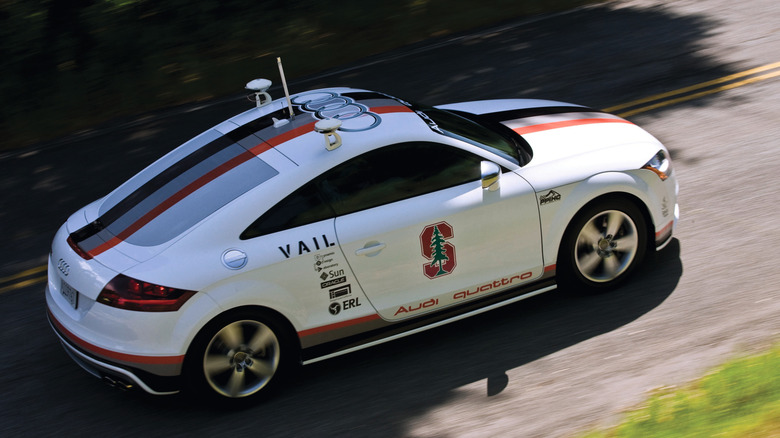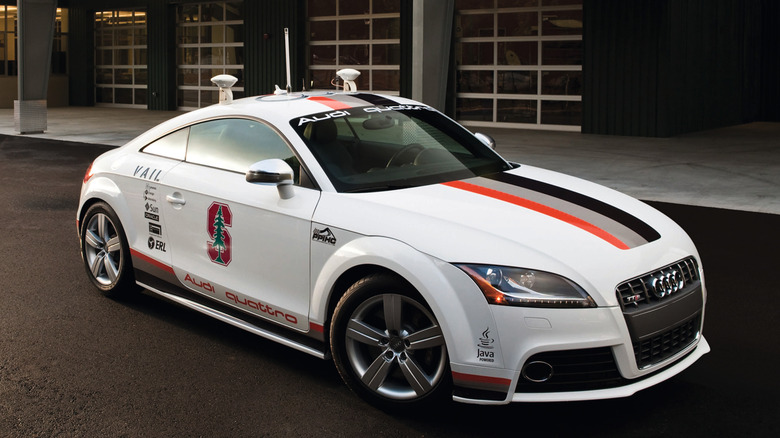Audi's Driverless Car Accomplished A Major Feat Years Before Tesla's Self Driving Technology Existed
Tesla is known for leading the way in self-driving, but it is not the only car brand developing the tech, nor the first one to do it. Several companies are testing self-driving vehicles with a focus on freight transport and autonomous taxis. Companies like Cruise, Waymo, and Zoox, have been granted permits to test driverless vehicles in California by the DMV. Lyft, on the other hand, has completed over 100,000 self-driving rides and operates in Metro Phoenix, Las Vegas, and Miami.
Tesla explains that all new Tesla cars come with the necessary hardware and software for Full-Self Driving (FSD). The company assures that its FSD can handle short and long-distance rides with no action required from the driver. In reality, the software is in initial beta testing, requires a driver to be ready to intervene at all times, and has had its share of problems. Users have complained that the software is nowhere near ready for unsupervised driving, as reported by CNN. And in 2021, the NHTSA opened an official investigation on Tesla FSD for crashes since 2018 that involved emergency vehicles.
By 2022, all new vehicles — EVs, hybrid, or gas – come equipped with something we'd consider a form of semi-autonomous driving assistance. Most include automatic breaking or pedestrian and cycler detection, blind-spot monitoring, cruise control, and lane change assist. Some brands like Mercedes Benz — with its approved "Drive Pilot" system — and BMW — working to deliver Level 3 in 2025 (via Car And Driver) — are moving quickly into a self-driving future. However, because Tesla introduced FSD in October 2020, per Inverse, the company is considered the leader in the sector. Meanwhile, a full decade before Tesla launched FSD, an Audi TTS drove up the famous Pikes Peak racing track in Colorado with no one behind the wheel.
The Autonomous Audi TTS Pikes Peak climb
On November 18, 2010, Audi announced that the Autonomous Audi TTS Pikes Peak research car had achieved its goal. The car — developed by Audi working with researchers from Stanford University, the VW Group Electronics Research Lab, and Oracle — climbed a tricky mountain track, famous for challenging the world's best drivers.
With no one behind the wheel, the Audi TTS drove through the 12.42-mile course and was immortalized in an Audi video (shown below). Representatives of the Pikes Peak International Hill Climb, the second-oldest race in America, were present to certify that the Audi completed the challenging ride up. It took the Audi 27 minutes to finish the mountain course, including the final dirt section. No driver has ever completed the course in less than ten minutes.
Audi World details the self-driving tech behind the ride. The Audi TTS had a 2.0 turbocharged injection engine and a six-speed double-clutch transmission, all of which were modified for electronic control. A new electric power steering system with direct wire control was also installed. Sensors were mounted on the Audi and special software was designed for the ride that changed self-driving history forever.
Today, all new Audi vehicles come with some form of semi-autonomous driving assistance technology, and we have Audi to thank for taking the big step through this door to the future. It's also important to note that this wasn't Audi's first visit to Pike's Peak for a historic drive around the course — and it wouldn't be the last!

